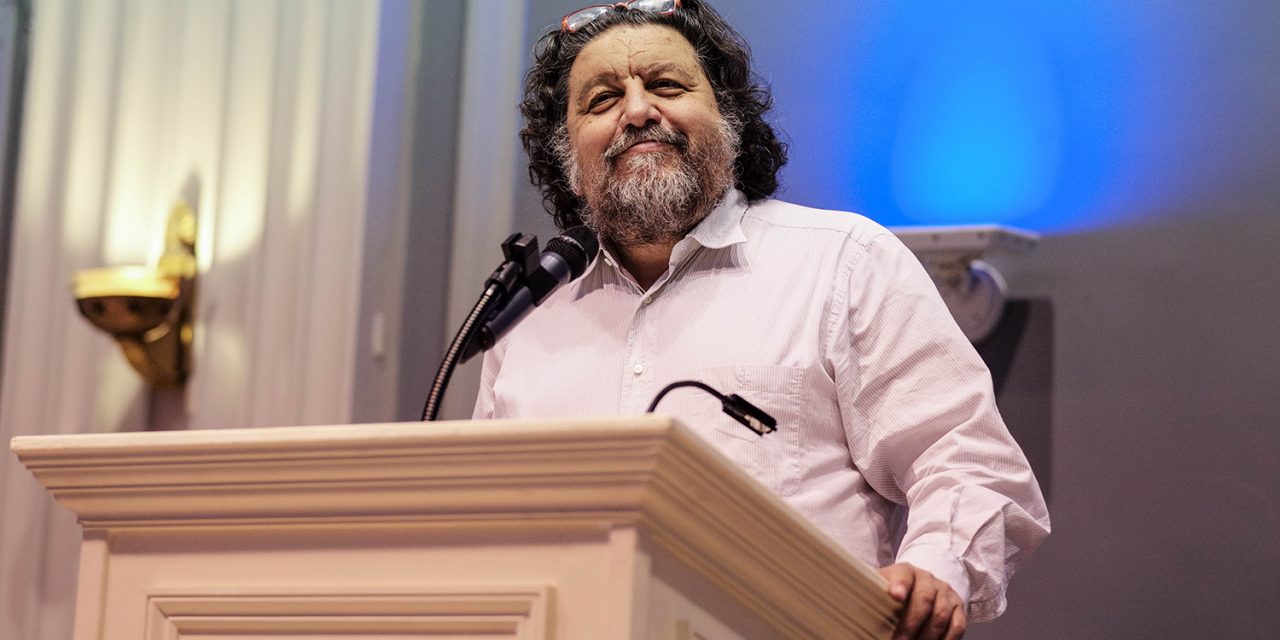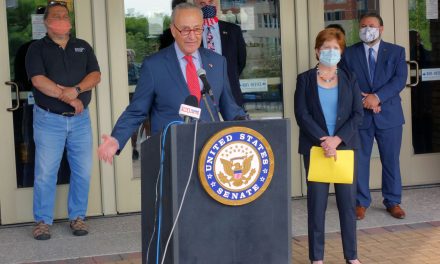Proctors Collaborative CEO: ‘The plan must be how to manage ambiguity, uncertainty’
Jim Murphy interviewed Philip Morris, CEO of Proctors Collaborative on Sunday, March 29 about the impact of the COVID-19 pandemic on the organization. Murphy is publisher of The Collaborative and director of marketing and corporate relations at Proctors Collaborative.
Q: There was so much positive energy in Proctors Collaborative throughout February. Renovations to a new home for Capital Repertory Theatre were on schedule for a July opening. The Saratoga community celebrated the grand opening of Universal Preservation Hall on Feb. 29, where there was a full slate of spring programming scheduled. A combined $27 million in construction projects and years of planning and fund-raising coming to fruition. When did it start to dawn on you that you were pivoting from preserving and transforming historic buildings into performance venues … to safeguarding the future of the entire organization?
A: I had been reading much of the science around COVID-19 in February. While now the dates all merge together and I certainly don’t think we were much ahead of the curve, but at a senior staff level, we were talking about this before the governor’s first request to ban public gatherings over 500. We actually decided to shut down all of our facilities, regardless of size, at the end of that week, by which time the governor had tightened the restrictions to include all public gatherings.
Q: Arts organizations across the country laid off staff as March dragged on. Proctors Collaborative received some criticism for its furloughs in a few pockets on social media. What was the reality behind that decision?
A: Again, reading a bit of the science made it clear we had to act radically. We were a $26 million-a-year organization dependent on $22 million of sales from tickets, food, concessions, advertising and fees. It disappeared instantly. So, we made the painful decision to lay off 80 percent of our staff. To me, the handwriting was on the wall, this was going to be long and the restart would be slow. I did what I thought would protect the properties and would cause the least harm to all.
Q: President Trump signed the $2 trillion Coronavirus Aid, Relief, and Economic Security Act on March 27, of which $50 billion was earmarked for airlines but just $225 million for the arts. Two museum associations had jointly sought $4 billion from Congress just to support its institutions; the Metropolitan Museum of Art in New York City alone estimates it will lose $100 million as a result of COVID-19. What does the arts landscape look like regionally and nationally a year from now without more support from the federal government?
A: It seems to me there are three stages here: The first one, Proctors Collaborative did two weeks ago; we reduced operations radically. The second one, where we are now, is to build a medium-term maintenance plan. Medium-term could be three to 12 months. This plan is not just making sure the properties do not decay, but also, be able to stay connected to artists and suppliers and artist agencies so that we are capable of restarting. It is also about participating in and with the communities we serve as we would have had the emergency not impacted us so severely. We will still broadcast and webcast activities for adults and kids.
Q: A study issued in late March of just 42 performing arts centers nationally show that those organizations and their audiences spend $2.3 billion annually and support 72,463 jobs. Closer to home, the Alliance for the Creative Economy has reported that the creative economy is our fourth largest employer in the Capital Region. What is at risk locally and nationally if arts organizations struggle or even fail as a result of the COVID-19 crisis?
A: So the question here is about how we will, as a society, change based on this experience. The move to home-based work, more home deliveries and web-based work and entertainment patterns will certainly explode and challenge live events until there is a vaccine.
We humans are social beings, though. The return to concerts, plays, dances, festivals, etc. is inevitable. It may even be a stronger attraction because so many other parts of life may bend further toward the home office and home delivery. The desire to be out with others may grow substantially. That’s a longer-term view, though.
Q: A year from now: What is the best-case scenario for local arts organizations and what is the worse?
A: Honestly, the best would be we are open and doing 50-60 percent of what we were doing when we closed. Absent a vaccine, which a year may be too short a time to have available, our business of gathering people will be restrained for a long time. Clearly, the worst is that we are closed still a year from now.
Q: What is happening today within Proctors Collaborative with the remaining employees and the boards of directors to ensure the doors reopen?
A: We are trying to first stabilize how we operate as a significantly smaller team and working largely from our homes. Then we will put flesh to the bone of what it will take to maintain ourselves in preparation for a restart. Then we have to seek every avenue of resource to pull that maintenance stage off.
Q: theREP’s final play at its now former home, “The Irish and How They Got That Way,” closed March 13 after just a few performances due to the coronavirus. What is the status of the renovation project on the new space just one-third of a mile away?
A: As of March 27, we were still in construction, but, clearly, there are so many public decisions to be made in the coming weeks, that the best I could say is, we have a plan and we support the decisions of the governor and will adapt our plan on the fly for the health of the communities we live in, support and love.
Q: Broadway tours have left the road. And it’s the same with every other form of entertainment; everyone is hunkered down. There are a range of prognostications out there from restrictions on public gatherings easing up by Easter, to social isolation being the norm throughout the spring and maybe beyond. There are so many logistics involved coordinating tours, casts, crew, financing, scheduling and more to get everything fully started back up … and so many things you don’t have control over. How do you plan for the future in such uncertainty?
A: The plan must be how to manage ambiguity, uncertainty. Stay talking, stay reading, keep laser focused on the goal that we must be part of recovery and adjust, adjust, adjust. And ask the community for its understanding and support. We are not a private for-profit company, we are a community based not-for-profit that is simply our community’s hopeful expression of the quality of life they want to have. Stay focused on that.
Q: You have ticket holders and subscribers for shows that are postponed with no reschedule dates, and some events may ultimately have to be canceled. What are you asking of those patrons? And what of the ones who may not have re-subscribed or are holding off on buying tickets?
A: Patience. We will figure this out when the information becomes clearer. We are not going anywhere.
Q: Beyond the short-term, what will the legacy of these adverse times be for Proctors Collaborative? How will it be transformed? How will your leadership be impacted?
A: I think I covered some of this. On a personal level, it seems like we need to learn how to respond to calamity like this as a business matter, not just as an emergency. The science says more of these sorts of events will happen; therefore, we structure better how to adapt.
Q: Winston Churchill, who certainly went through some trying times as England’s prime minister during World War II, described himself as an optimist. “It does not seem to be much use to be anything else,” he was quoted as saying. Are you optimistic? And if so, where does the hope spring from?
A: I’m always an optimist and always see the best of folks. Not sure where it comes from, but “there does not seem to be much use to be anything else.”





